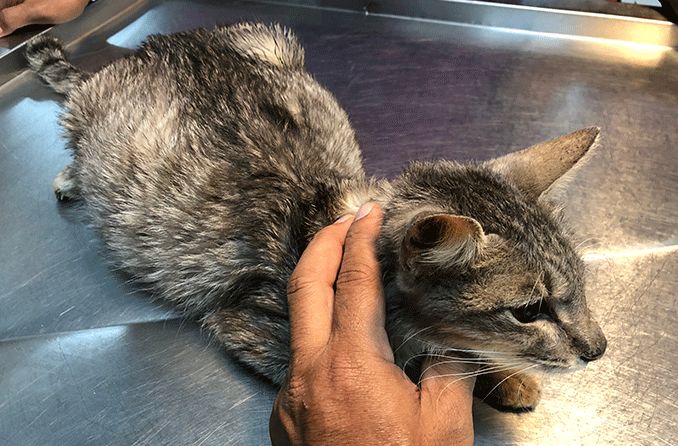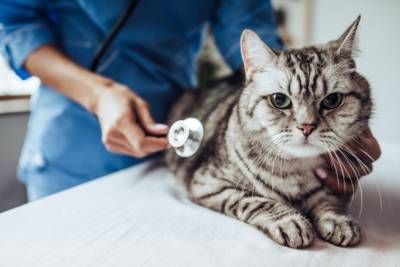Free Shipping On All Orders Over $150.
Understanding Cat Malnutrition and Weight Loss Syndrome
Understanding Cat Malnutrition and Weight Loss Syndrome is crucial for pet owners who want to ensure their feline friends remain healthy and vibrant. This condition often goes unnoticed until significant symptoms appear, leading to serious health implications. In this article, we will delve deep into the factors that contribute to malnutrition in cats, how it manifests, and what can be done to treat and prevent this challenging issue.
Causes of Cat Malnutrition

Malnutrition in cats can arise from various factors, impacting their health negatively. It’s essential to recognize these causes to provide proper care and dietary adjustments.
Nutritional Deficiencies
One of the most common causes of cat malnutrition is nutritional deficiencies.
Cats require specific vitamins and minerals, including phosphorus, calcium, and vitamin D, to maintain optimal health. If these nutrients are lacking in their diet, it can lead to severe health issues such as rickets or bone deformities.
Phosphorus Deficiency Phosphorus plays a vital role in forming bones and teeth and ensuring energy transfer within cells. A lack of phosphorus can result in weak bones and poor overall growth. When cats don't receive enough phosphorus, they may exhibit signs of lethargy, reduced appetite, or even physical deformities.
Vitamin D and Calcium Vitamin D is critical for absorbing calcium and phosphorus from food; without adequate sunlight exposure or dietary intake, cats might face malabsorption issues. Calcium, on the other hand, is integral for normal muscular and nerve functions. Insufficient calcium levels can lead to muscle spasms, seizures, and other severe problems.
Behavioral Factors
Stress, anxiety, and other behavioral influences can lead to reduced food intake in cats, especially young kittens.
When a cat experiences a change in environment—such as moving to a new home or the addition of another pet—it can become stressed. Stress can diminish a cat's desire to eat, ultimately causing weight loss and malnutrition.
Environmental Changes For example, young kittens raised in a stable environment may stop eating when introduced to new stimuli, leading to malnourishment.
Overly Attached Cats Some cats develop a strong attachment to their owners. If separated temporarily, they may refuse to eat, exacerbating the malnutrition situation.
Medical Conditions
Various medical conditions can also play a significant role in causing malnutrition in cats.
Cats suffering from chronic illnesses may experience changes in appetite, resulting in weight loss and nutrient deficiencies. Some prevalent diseases include kidney disease, diabetes, and infections that impact their overall health and ability to consume food properly.
Parasites and Infections
Internal parasites, such as worms, can lead to malnutrition in young cats.
When infected with parasites like hookworms or roundworms, cats may struggle to absorb the nutrients needed for growth and maintenance. These parasites feed on the cat's nutrients, leading to malnutrition despite a seemingly adequate diet.
Furthermore, viral infections like FIV (Feline Immunodeficiency Virus) can compromise the immune system, making it difficult for the body to utilize nutrients efficiently.
Kittens with Stress-Related Malnutrition

Stress-induced malnutrition is particularly common in younger cats, affecting their growth and development.
Kittens may refuse to eat due to psychological factors, which can quickly spiral into more severe health complications if not addressed.
Identifying Stress Triggers
Understanding what triggers stress in kittens is crucial for prevention and intervention.
Common triggers include loud noises, unfamiliar people, or aggressive pets. Observing your kitten's behavior can help identify when they feel threatened or anxious, allowing you to create a more supportive environment.
Creating a Safe Space
Providing a safe, comfortable space for your kitten can significantly reduce stress levels.
Consider creating a designated area where they can retreat when feeling overwhelmed. Incorporate a cozy bed, toys, and even soothing music to help them relax.
Gradual Introductions
If introducing new pets or people, do so gradually.
Allow your kitten to acclimate at their own pace, providing treats and positive reinforcement during interactions. This method helps build trust and reduces anxiety, encouraging healthy eating habits.
Dehydration and Electrolyte Imbalances

Dehydration is another critical factor that can lead to malnutrition in cats.
It can cause electrolyte imbalances, further complicating the health status of affected felines.
Recognizing Signs of Dehydration
Knowing how to recognize dehydration in cats is essential for timely intervention.
Signs include dry gums, lethargy, and decreased skin elasticity. Regular checks can help catch early signs and prompt immediate action.
Importance of Hydration
Ensuring your cat has access to fresh water at all times is crucial for their health.
Encourage water intake by offering wet food, which contains moisture, or using a water fountain that attracts cats with its movement. Keeping your cat hydrated can help prevent malnutrition and support their overall health.
Managing Electrolyte Levels
Electrolyte imbalances can lead to severe complications, including muscle weakness, irregular heartbeats, and even death.
If you suspect an electrolyte imbalance, consult a veterinarian for appropriate treatment options, including rehydration solutions or intravenous fluids if necessary.
Parasitic Malnutrition in Kittens
Kittens are highly susceptible to parasitic infections, which can severely impair their nutritional status.
Common Internal Parasites
Hookworms and roundworms are common culprits in causing malnutrition among young cats.
These parasites latch onto the intestinal walls, absorbing nutrients meant for the kitten and leading to stunted growth and weight loss. Regular deworming is vital to combat these threats.
Symptoms of Parasitic Infections
Symptoms of parasitism can range from vomiting and diarrhea to anemia and malnutrition.
Paying close attention to your kitten's litter box behavior and overall appearance can help identify any potential issues early on.
Treatment Options
Consult a veterinarian for appropriate deworming medication tailored to your kitten's needs.
Maintaining a clean living environment, along with routine veterinary check-ups, is essential in preventing infestations and promoting healthy growth.
Liver and Kidney Dysfunction
Liver and kidney issues can lead to significant health concerns in cats, impacting their nutritional status.
The Role of the Liver in Nutrition
The liver is integral in processing nutrients absorbed from food.
Any dysfunction can impede digestion, causing malnutrition. Cats with liver disease may exhibit symptoms such as weight loss, vomiting, and lethargy.
Kidney Disease and Its Impact
Chronic kidney disease is prevalent in older cats but can occur in younger ones too.
This condition affects the kidneys' ability to filter waste products, leading to appetite loss and subsequent malnutrition. Regular veterinary visits can aid in early detection and management.
Monitoring and Management
Monitoring your cat's health through regular check-ups is vital, especially if they show signs of illness.
Veterinarians may recommend dietary changes or supplements to support liver and kidney function and encourage proper nutrient absorption.
Weight Loss Due to Illness
Weight loss and malnutrition often go hand-in-hand with various illnesses.
Chronic Diseases
Chronic conditions such as cancer, hyperthyroidism, or diabetes can lead to drastic weight loss in cats.
When the body is battling illness, it may redirect energy away from maintaining weight, leading to malnutrition over time.
Inflammatory Conditions
Conditions that cause inflammation, like pancreatitis, can also affect a cat’s appetite and nutrient absorption.
If your cat shows signs of weight loss, increased thirst, or changes in behavior, it’s vital to consult a veterinarian for a thorough examination and diagnosis.
Professional Diagnosis
A professional diagnosis is crucial for identifying the underlying cause of weight loss and establishing an effective treatment plan.
Diagnostic tests, including blood work and imaging, can help pinpoint the exact issue, guiding appropriate interventions.
Complications Associated with Cat Malnutrition
Malnutrition in cats can lead to a myriad of complications that further deteriorate their health.
Bone Deformities
One significant complication of malnutrition, particularly involving calcium and phosphorus deficiencies, is the development of bone deformities.
In severe cases, these deformities may require surgical intervention if detected after a certain age.
Weakened Immune System
Malnutrition can compromise a cat's immune system, making them susceptible to infections and diseases.
With their body unable to fight off pathogens effectively, the risk of illness increases significantly.
Long-term Consequences
Long-term malnutrition may lead to irreversible health consequences, including chronic pain and ongoing health challenges that can affect quality of life.
Addressing the root causes of malnutrition promptly is crucial to preventing these complications.
Diagnosing Malnutrition in Kittens
Early diagnosis of malnutrition can significantly improve outcomes for affected kittens.
Symptom Recognition
Recognizing the symptoms of malnutrition is the first step toward diagnosing the issue.
Signs include lethargy, weight loss, decreased appetite, and noticeable body deformities. Observing these signs allows for timely intervention.
Blood Tests
Blood tests can reveal deficiencies in essential nutrients like calcium, phosphorus, and vitamin D.
Your veterinarian can guide you through the appropriate testing process and interpret the results.
Imaging Techniques
Imaging techniques, such as X-rays, can help identify skeletal deformities and other internal issues related to malnutrition.
These diagnostics allow veterinarians to formulate a comprehensive treatment plan catering to your cat's specific needs.
Treatments and Remedies for Cat Malnutrition
Treating malnutrition in cats involves a multifaceted approach that addresses dietary deficiencies and underlying health issues.
Dietary Adjustments
Adjusting the cat's diet is often the first course of action.
High-quality commercial cat food with balanced nutrients is essential for recovery. Supplementing the diet with specific vitamins and minerals as recommended by a veterinarian can promote faster healing.
Sunlight Exposure
Sunlight exposure is essential for synthesizing vitamin D.
Allowing indoor cats to bask in sunlight for short periods can help boost their vitamin D levels. However, always ensure that sunbathing happens during safe hours to avoid overheating.
Regular Veterinary Check-ups
Regular veterinary visits are paramount for monitoring your cat's progress.
Routine examinations can detect any recurring issues and adjust treatment plans accordingly.
Prevention of Rickets in Cats
Rickets, a condition caused by severe deficiencies in vitamins and minerals, can be prevented through proper nutrition and care.
Balanced Diet
Feeding a balanced diet rich in essential nutrients is key to preventing rickets.
Commercial cat foods formulated to meet cats' nutritional requirements are often the best option.
Natural Sources of Vitamin D
Cats can absorb vitamin D naturally through their diet.
Include sources like fatty fish, egg yolks, and liver in their meals. Additionally, consider discussing supplementation options with your veterinarian.
Conclusion
Understanding Cat Malnutrition and Weight Loss Syndrome requires awareness of its causes, symptoms, and treatments. By recognizing the early signs of malnutrition and addressing them proactively, pet owners can ensure their beloved feline companions remain healthy, vibrant, and free from the precarious effects of malnutrition. From dietary adjustments to veterinary interventions, every step taken counts towards protecting and nurturing our furry friends.
0 comment
Be the first to comment